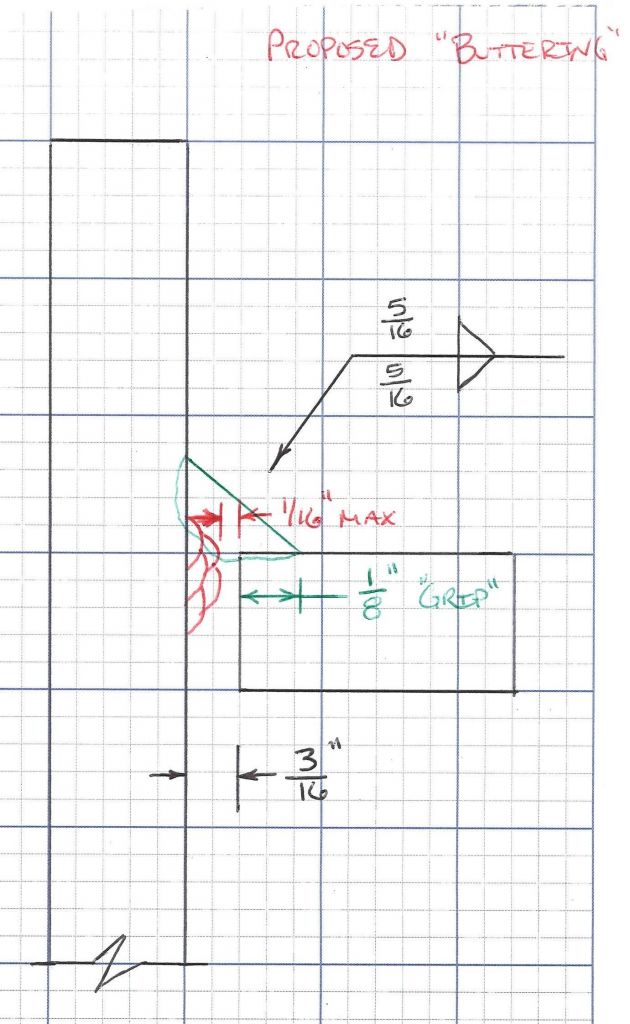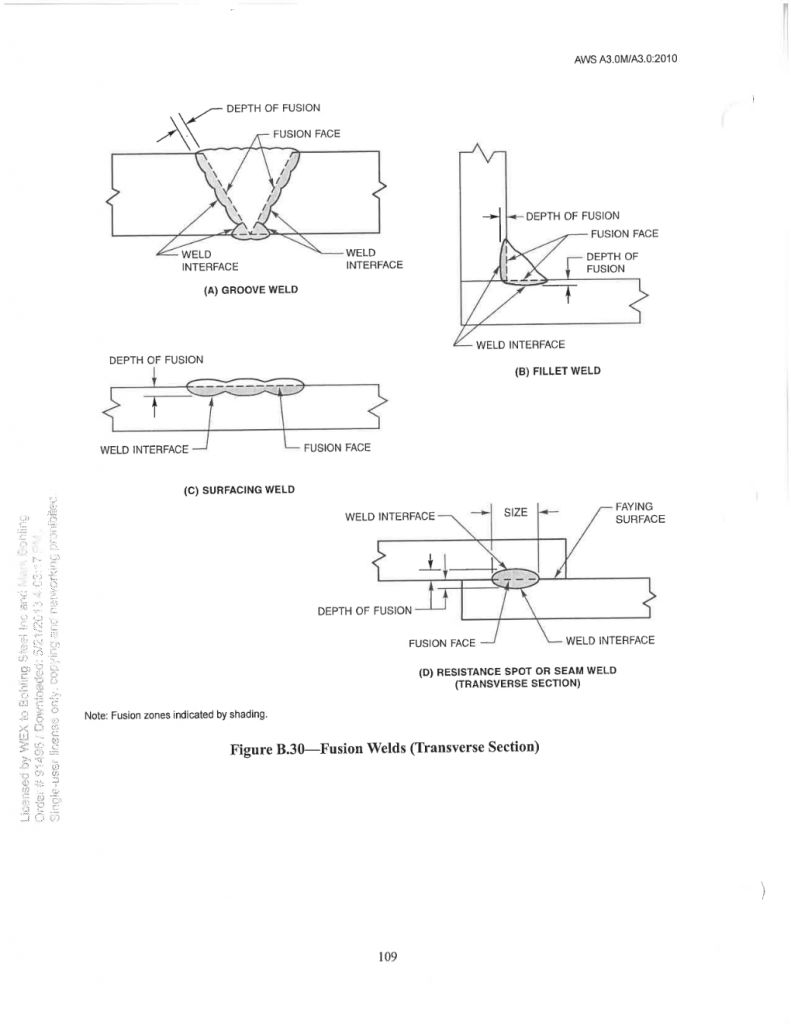I'm rekindling an old topic... how to handle gaps in T-Joints.
I read through some of the older posts on the topic and I'm not sure I feel any better about how I'm thinking about it. :)
I've been really fortunate to work for a couple manufacturers that had very good fabrication and welding programs, so I didn't have to deal with a lot of fit-up issues. When we did have a gap in a T-joint what I remember being told is; either member can be "buttered" to reduce the gap, do not bridge the gap, and if you can reduce the gap to 1/16" or less there is no need to increase the weld size by the size of the gap.
I've ran with that for quite some time and didn't really consider it, but I've recently started working with a company that has some relatively new welders and fitters and when cutting slots in tube shapes for thru-vang type plates they have struggled to keep the cut-outs within a reasonable tolerance. We're dealing with it, but the whole event made me question this "buttering" thing.
I understand that fillet welds are designed on the basis of shear stress on the throat, but there is a component that I refer to as "grip" as well and I don't know if I'm considering it properly. What I mean is if a t-joint is simply made of two plates... ⟂ ...the horizontal plate is anchored, the vertical plate is loaded in tension vertically, and there is a 1/4" fillet weld on both sides. The strength of that joint relies on the throat as well as the "grip" of the fillet weld leg on the materials...right??
Moving on... so if we have an 1/8" gap between the plates I understand that adding buttering passes to the edge of the vertical plate (base metal restoration essentially) resolves the fundamental issue, but if I apply buttering passes/surfacing welds to the horizontal plate, then re-fit the joint, and apply a 1/4" fillet weld I'm only going to have 1/8" of leg "gripping" the vertical plate. This compromises the strength of the joint...right?? LOL
I feel like I know the answer, but I've executed the latter, under the direction of some seasoned welders and inspectors and I've instructured others to do the same, but, I can't say that in all cases the vertical plate was in tension either.
That said...if the vertical plate was fixed and the horizontal plate was loaded putting the weld in shear, lets say transverse to the joint, I'm not going to have... I suppose it would be considered, 'bearing' surfaces equal to 1/4" either, I'd have 1/8" of the vertical leg of the weld bearing on the vertical plate... what does that mean???
Hahah... paralysis by analysis - - I can't even think about it, my mind spins out at this point.
Thanks in advance, I'll be sipping a whiskey and eagerly awaiting someone that can decipher this post. ;) Cheers!!

I suppose you could butter a fillet weld joint to reduce the root opening, but buttering is usually done to reduce the root opening in groove welds. You can add the gap dimension to the fillet weld leg size up to 3/16", which is a lot. I guess I'd have to see what you are proposing for buttering a T-joint fillet weld to completely understand what you are trying to accomplish.
I'm not following what you mean by the term "grip" when speaking about a fillet weld.
I'm not finding an easy way to provide an image here... ummm.... standby... I'll provide a Dropbox link.

I'm not sure what I think about this. Never had to consider buttering for a fillet weld before.
Buttering is meant to extend the length of the short part in a manner that extends its length to achieve an acceptable root gap condition.
The way you've drawn your understanding of buttering does not achieve this as the the result leaves behind an unacceptable gap.
The corrected drawing I'm sharing shows how this should be done.
Note - the buttering needs to be completed prior to the parts being fit together.

I agree with Tim regarding adding to the stem of the T joint vs the other surface to correct the root opening. I've only seen beam flanges buttered to get the root opening back to an acceptable dimension for field welded Moment connections at beam to column moments.
Gentlemen, It is interesting to notice that "buttering" is used a lot for this topic but to my earlier understanding "buttering" is for material transition purpose and for this case "buildup" is the suitable term?
To my understanding adding weld metal on the edge of the vertical plate or on the hrizontal plate surface will serve the same purpose to minimize the gap. But the fillet size is measured from the root so to achieve the required fillet weld size the buildup on vertical plate edge should be more economic as it will result in less weld metal deposited. Buildup on horizontal plate surface will still leave the root at the edge of the vertical plate. To achieve required fillet weld size with suport of enough weld metal on the horizontal plate as a "foundation", you will really have to build up much more than buiding-up on the edge. Cheers.
Terms from ASME IX:
buttering: the addition of material, by welding, on one or
both faces of a joint, prior to the preparation of the joint for
final welding, for the purpose of providing a suitable transition
weld deposit for the subsequent completion of the
joint.
build-up of base metal (restoration of base metal thickness):
this is the application of a weld material to a base metal so
as to restore the design thickness and/or structural integrity.
This build-up may be with a chemistry different from
the base metal chemistry which has been qualified via a
standard butt-welded test coupon. Also, may be called
base metal repair or buildup.

AWS A3.0 Standard Terms and Definitions has similar wording:
buttering. A surfacing variation depositing surfacing metal on one or more surfaces to provide metallurgically compatible weld metal for subsequent completion of the weld. See also buildup cladding, and hardfacing.
Hi John,
Thanks for sharing the A3.0 wording. The key words of buttering definition are "provide metallurgically compatible weld metal". Not trying to be picky or to be off-topic but I've been in an area where buttering is used for cases such as when joining a dissimilar metal joint, welding a layer of ni-based metal on the ferritic (low alloy) steel side and conducting the mandatory PWHT, and then joining this layer with Ni-based filler metal to the austenitic side to avoid the PWHT.
"provide metallurgically compatible weld metal" implies that the two work piece to be joined are "not metallurgically compatible" so the buttering weld metal has to serve in between.
Like when wife is not getting along well with mother(not compatible), the husband has to act in-between since at least he is compatible with each of them.


I agree with your description of buttering. D1.1 doesn't actually use the word "buttering" to talk about correction of a root opening, rather says that the root opening may be corrected by welding.
D1.1:2015, Clause 5.21.4.2
Correction. Root openings greater than allowed in 5.21.4.1, but not greater than 3/4", whichever is less, may be corrected by welding to the acceptable dimensions prior to joining the parts by welding.
Next Clause speaks to doing this with the EOR's approval only.
Thanks again for bringing up this, the use of nonstandard terms get us in trouble sometimes, when everyone has a difference use of the term.




